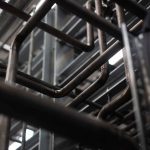You know what’s funny? Most people don’t think twice about what happens to their old servers. They upgrade, toss out the old ones, and move on — like it’s just another line item in a budget.
But here’s the thing: those machines still have plenty of life left in them, and reusing them isn’t just good business — it’s good for the planet.
There’s a growing realization in tech circles that buying refurbished or used servers is one of the easiest, most overlooked ways to reduce waste and carbon emissions.
Think about it: instead of ordering shiny new servers straight off the line, you’re giving existing ones a second (or even third) chapter. Less manufacturing. Less mining. Less waste. That’s a win in anyone’s book.
The Real Cost of New Hardware
Let’s peel this back a bit. Every brand-new server starts life in a factory somewhere — and before it even reaches your rack, it’s already burned through a ton of energy.
Mining raw materials, producing chips, assembling components, packaging, shipping — it all leaves a carbon trail.
Studies have estimated that building a single enterprise server can pump out more than a ton of CO₂ emissions before it’s even switched on. Crazy, right?
Multiply that by thousands of companies upgrading their fleets every few years, and it starts to make sense why IT infrastructure quietly contributes so much to global emissions.
That’s what makes the shift to refurbished gear such a big deal. When you buy something from a trusted provider of refurbished servers, you’re not just saving money — you’re cutting that invisible carbon bill in half. Sometimes more.
Why Refurbished Hardware Deserves More Credit?
Here’s the part most people miss: servers are built tough. Like, really tough. These things are designed to handle round-the-clock workloads for years without flinching.
But a lot of businesses retire them early – not because they’re broken, but because newer models hit the market.
A well-maintained, refurbished system can easily handle modern workloads. Take the Dell PowerEdge R7525 server, for example. It’s no antique.
In fact, with updated parts and firmware, it can run like new — but with a fraction of the environmental cost of manufacturing another one from scratch.
Think of refurbishment as a way of closing the loop. You get the same reliability, but without all the waste that comes with “new.”
Cutting Down on E-Waste
E-waste is the digital world’s dirty secret. Servers, laptops, and networking gear pile up fast — and when they’re dumped in landfills, they don’t just vanish. They leak chemicals, metals, and all sorts of nasty stuff into the ground.
That’s where refurbished gear changes the game. Instead of tossing out perfectly functional hardware, it’s cleaned up, tested, repaired, and redeployed.
A Dell R640 server, for instance, can go right back into action after some love from a qualified refurbisher. That’s one less machine in a landfill — and a big step toward real sustainability.
Here’s the kicker: most of this hardware isn’t “old.” It’s just been replaced early. The gap between “new” and “used” in enterprise IT is smaller than most realize.
Energy Efficiency Isn’t Just for New Gear
A lot of folks assume that refurbished servers are less efficient, but that’s not always true. Many refurbished models are updated with modern components or optimized firmware. The performance-per-watt difference? Barely noticeable in many cases.
And if you zoom out a bit — thinking about the entire lifecycle — the environmental score tilts hard in favor of reusing what’s already built.
The emissions from powering a server over a few extra years are peanuts compared to the footprint of making a new one.
The Money Angle
Let’s not pretend money doesn’t matter. Refurbished servers can cost anywhere from 40% to 60% less than new ones. That’s not chump change — especially for startups or smaller IT teams trying to grow responsibly.
Buying from certified resellers like ServerMonkey means you’re not gambling with quality. Their refurbished units are tested, cleaned, and warrantied, so you get the reliability of enterprise hardware without the sticker shock. That’s smart business — and smarter sustainability.
Why Dell Servers Lead the Pack?
Dell’s enterprise hardware has a reputation for being rugged and modular, which makes it perfect for reuse.
Systems like the Dell PowerEdge R7525 server and Dell R640 server were built with scalability and longevity in mind. Need more RAM? Easy upgrade. Want to swap in new storage? No problem.
Because of that design philosophy, Dell servers are some of the best candidates for refurbishment. They can be easily reconfigured, tested, and redeployed without breaking a sweat. Less waste. More use. A smaller carbon footprint overall.
The Bigger Picture: Circular IT
Here’s where it all comes together — the circular economy idea. Instead of the old “make, use, toss” model, companies are now embracing “reuse, refresh, redeploy.” The goal is simple: keep valuable hardware out of landfills for as long as possible.
When businesses buy refurbished servers, they’re not just saving a few bucks — they’re helping build a system where resources circulate, not vanish. Every reused component means less mining, less energy, and fewer emissions.
Some big enterprises have even started internal reuse programs, refurbishing and redeploying their own hardware between departments instead of buying new. It’s the kind of quiet efficiency that adds up fast.
Finding the Right Partner
Not every reseller does refurbishment right. You want transparency – vendors who test thoroughly, replace worn parts, and stand behind their work.
That’s why companies like ServerMonkey are so popular in the space. They go the extra mile to ensure every machine meets enterprise standards before it ships out.
When shopping for refurbished gear, ask vendors about their testing process and warranty coverage. A good partner will be upfront about all of it. The best ones will even share their environmental practices – that’s when you know you’ve found the real deal.
Final Thoughts
At the end of the day, buying refurbished servers isn’t just about saving a few dollars. It’s about taking a smarter, more sustainable approach to IT. Every time you choose refurbished over new, you’re reducing e-waste, cutting emissions, and giving solid hardware a second chance to shine.
So next time you’re upgrading your data center, think twice before hitting “add to cart” on brand new gear. Maybe what you really need is already out there – cleaned up, tested, and ready to go.
Because being sustainable doesn’t always mean reinventing the wheel – sometimes it just means keeping the good ones rolling a little longer.







